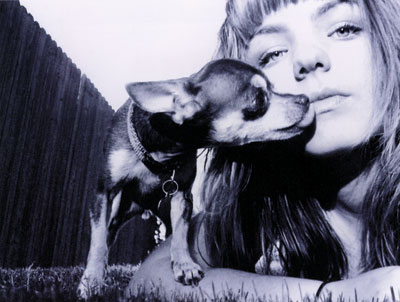All Nonfiction
- Bullying
- Books
- Academic
- Author Interviews
- Celebrity interviews
- College Articles
- College Essays
- Educator of the Year
- Heroes
- Interviews
- Memoir
- Personal Experience
- Sports
- Travel & Culture
All Opinions
- Bullying
- Current Events / Politics
- Discrimination
- Drugs / Alcohol / Smoking
- Entertainment / Celebrities
- Environment
- Love / Relationships
- Movies / Music / TV
- Pop Culture / Trends
- School / College
- Social Issues / Civics
- Spirituality / Religion
- Sports / Hobbies
All Hot Topics
- Bullying
- Community Service
- Environment
- Health
- Letters to the Editor
- Pride & Prejudice
- What Matters
- Back
Summer Guide
- Program Links
- Program Reviews
- Back
College Guide
- College Links
- College Reviews
- College Essays
- College Articles
- Back
Model Health
Models and the fashion industry seem to be one of the most glamorous professions in the world. They are rich, beautiful, and have some of the most exclusive merchandise in the world at their finger tips. These perceptions are part of the reason that the dark underside of modeling and the personal struggles in the day-to-day lives of models is often overlooked.
Eating disorders and drug addictions are some of the most prominent issues facing models today. Models are completely immersed in an industry that creates an ever increasing pressure to lose more and more weight, with designers creating pieces too many sizes too small for a healthy body.
In this society where, according to Kim Noorda, a prominent model and the face of Bvlgari, "You look healthy," is not a compliment, many professionals suffer from anorexia, bulimia, and other eating disorders that stem from inferiority complexes due to the competitiveness of the industry and the insecurity that unstableness causes. Noorda has herself struggled with disordered eating and written about her issues with body image and continues to be treated for it.
Noorda was identified as a candidate for treatment by her agent due to the Council of Fashion Designers of America's (CFDA) Health Initiative. This pervasive program, started in 2007, works to promote awareness and support in the industry for the young women in it. They partner with the industry and health professionals to create a safety net and an environment of acceptance for the young models. The council also provided guidelines for the hiring of models and the hour they can work. Models under 18 cannot work past midnight and if under 16, they cannot work runway shows.
This is an effective first step towards the treatment of these issues but true eradication can only be achieved when the industry works toward prevention. The designers and agents need to develop a healthier standard and expectation of beauty for their models. When models are getting fewer shows and jobs when they gain a couple pounds, the problem is just compounded, and this culture needs to be slowly over-hauled.
Many other countries have their own regulations for the health of models, and all the countries could to learn from each other and create more well-rounded and effective prevention techniques. Madrid was the first in the world to issue a ban on models who are too thin, in 2006. Model who have a BMI under 18, the bottom of the range for normal weight, are not allowed to participate in Madrid's Fashion Week shows. Milan took similar action and Israel took this initiative a step further when it banned models with an underweight BMI from catwalk shows, photo shoots, and advertising campaigns in 2013.
These are great preventive measures. With these restrictions, models will be forced to maintain a healthy weight and not feel the pressure to lose more and more weight because it will only have an adverse effect. If the US can combine these precautionary measures with the support and treatment program they have put in place, models will finally be ensured a health work enviornment.

Similar Articles
JOIN THE DISCUSSION
This article has 0 comments.
